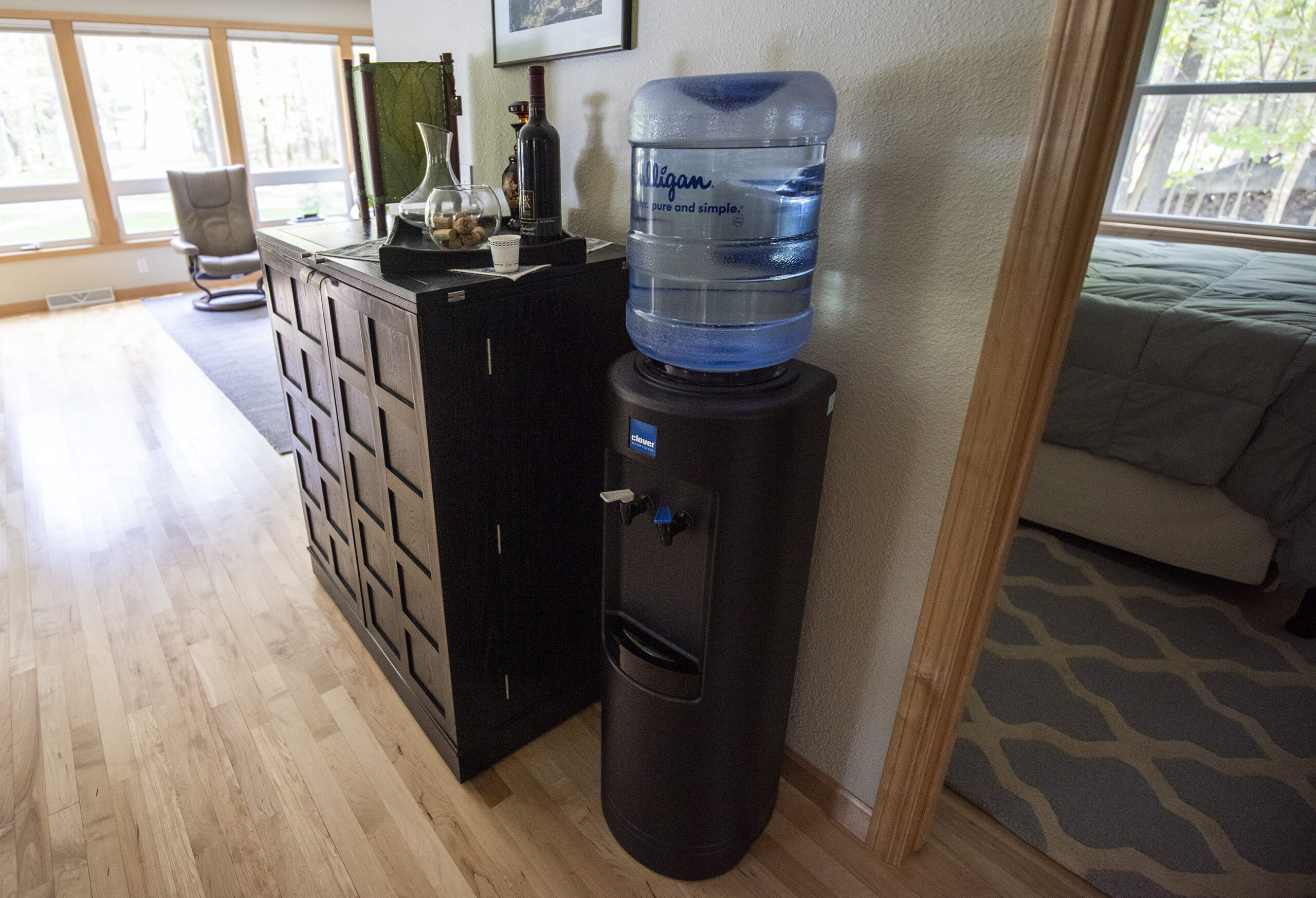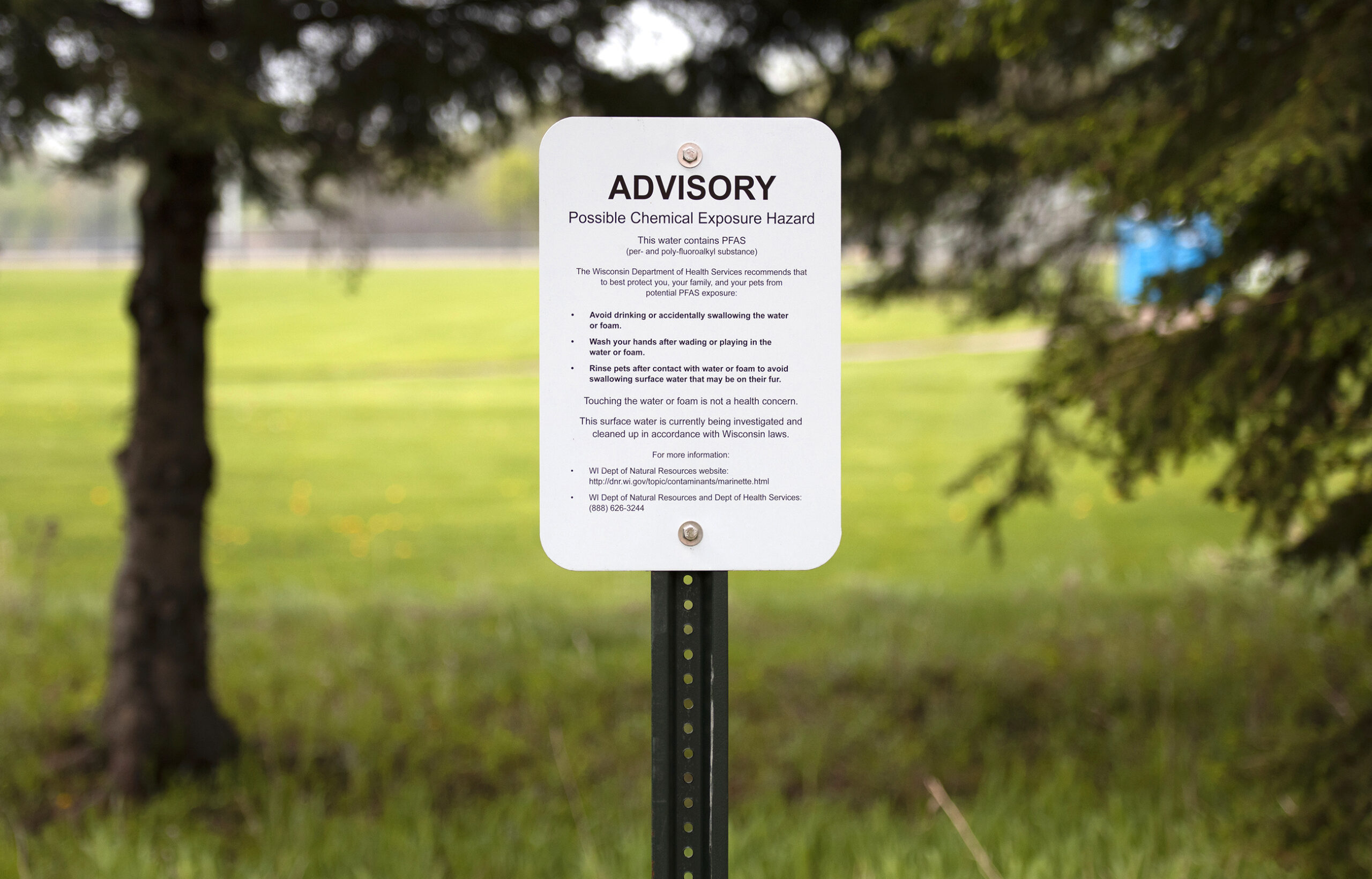Wisconsin environmental regulators are providing bottled water to one northern Wisconsin town due to PFAS pollution of private wells, while agencies continue to investigate a source of contamination.
Testing of private wells in the Oneida County town of Stella showed levels as high as 11,900 parts per trillion for PFOA — one of the two most widely studied PFAS chemicals. The Wisconsin Department of Natural Resources expanded testing last fall after statewide groundwater sampling of 450 wells turned up high levels of the so-called “forever chemicals” there.
The findings have revealed levels as much as 170 times higher than the state’s drinking water standard of 70 parts per trillion and hundreds of times higher than groundwater standards previously recommended by the Wisconsin Department of Health Services. That’s prompted state health officials to issue drinking water advisories for affected wells. Concentrations are also far beyond federal health guidelines issued by the U.S. Environmental Protection Agency last year.
News with a little more humanity
WPR’s “Wisconsin Today” newsletter keeps you connected to the state you love without feeling overwhelmed. No paywall. No agenda. No corporate filter.
In a virtual press conference Thursday, the DNR said two dozen out of 38 wells sampled have revealed levels above Wisconsin’s health guidelines for the chemicals.
“We have not identified a source of this contamination, but continue to review available information to help us understand potential sources,” Jim Zellmer, the DNR’s administrator of the environmental management division, said.
The DNR has already provided cases of bottled water to the town for distribution to any concerned resident on a temporary basis. The agency is contracting with Culligan and plans to spend $50,000 to deliver bottled water to households whose wells show levels above state health guidelines for the next six months.
Residents who are interested in home delivery of bottled water must request it from the DNR and sign an agreement that allows the state and vendor to access their homes. Funding for bottled water will come from the state’s environmental repair fund. The spending may require the DNR to shift resources away from addressing other human health threats, including cleaning up contaminated sites where no party has been held responsible.
While the DNR has yet to identify a source of contamination, it’s working with the EPA to pinpoint a source.
“Some of the potential sources for PFAS may include fire training and fire response sites, airports, military installations, industrial sites such as coated paper mills and metal finishers, biosolids from municipal wastewater treatment facilities and accidental releases such as spills,” Zellmer said.
Christine Sieger, the DNR’s remediation director, said it’s too early to rule out any potential cause of contamination.
“I don’t think we have any military installations here, but all of those things are being evaluated in these early stages,” Sieger said.
Sieger cautioned investigation of PFAS contamination can take years and may not yield a source that’s responsible for cleaning up pollution.
Treatment systems for PFAS costly to install, maintain
PFAS, or per- and polyfluoroalkyl substances, represent a class of thousands of synthetic chemicals widely used by industry since the 1940s. They’ve been used in everyday products like nonstick cookware, stain-resistant clothing, food wrappers and firefighting foam. PFAS have been dubbed forever chemicals because they don’t break down easily in the environment. Studies have found PFAS in the blood of 98 percent of Americans, and research shows high exposure to the chemicals can cause kidney and testicular cancers, fertility issues, thyroid disease and reduced response to vaccines over time.
“We have worked to review all of the private well results and issued individual letters to residents when those levels are above the health threshold so that they can take action to protect themselves,” DHS toxicologist Sarah Yang said.
Yang said state health officials don’t have plans to test residents’ blood levels for the chemicals, saying it won’t reveal whether people are at higher risk. She added health officials also have no plans to test food grown in the area, noting agricultural products are regulated by the state Department of Agriculture, Trade, and Consumer Protection.
PFAS contamination has been found in both shallow and deep wells within the town. The DNR is still gathering information on recommendations for homeowners to secure a long-term source of safe water whether that’s replacing wells, drilling deeper wells or installing treatment.
One concern the agency has previously highlighted for Stella residents is that water treatment methods for the chemicals have not been tested above 1,500 parts per trillion. Kyle Burton, the DNR’s field operations director, said home systems that treat PFAS are expensive to install and maintain.
“There are treatments that have been shown to be able to remove PFAS in the concentrations that we’re finding here in Stella, though they may not be very cost-effective in the long term for residents,” Burton said.
Within the next 30 to 60 days, the DNR plans to contact homeowners in the Stella area to further expand sampling of properties for PFAS contamination.
PFAS have been detected in more than 50 communities across Wisconsin, including Superior, La Crosse, Eau Claire, Wausau, Madison and Milwaukee. Around two-thirds of Wisconsin residents get their drinking water from groundwater that’s treated by public water supplies. But around one-third of people in Wisconsin rely on private wells that draw directly from groundwater.
Unlike public water supplies, private well owners aren’t required to test their wells or correct any water quality issues that may be discovered. Furthermore, the state currently lacks groundwater standards for PFAS, but the DNR has just begun crafting regulations for the chemicals.
The state also lacks programs that provide funding to residents who want to test for PFAS in private wells. Although, Burton noted the state is currently holding discussions with local health agencies and county governments who are interested in setting up sampling programs, which could be supported by federal funding. He also added that homeowners can receive reimbursement for testing through the state’s well compensation grant program.
State health and environmental regulators will provide updates about PFAS contamination of private wells with town leaders and residents Thursday night in the Stella Town Hall at 5 p.m.
Wisconsin Public Radio, © Copyright 2026, Board of Regents of the University of Wisconsin System and Wisconsin Educational Communications Board.




